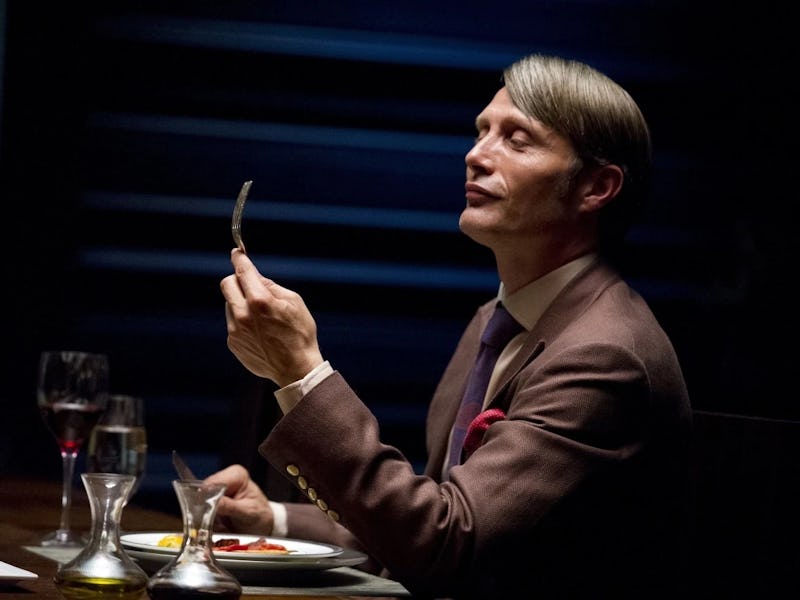Hannibal Turned Murder Into Performance Art — And Changed Network TV Forever
Eat the rude.

Writer, director, and show creator Bryan Fuller has made a career out of death. From his series Dead Like Me, Wonderfalls, and American Gods, he’s directly woven stories out of the macabre, even ones with sunny dispositions such as the cult-favorite Pushing Daisies. However, of all of his work thus far, none of them quite settle under the skin like Hannibal.
One of the most grotesquely beautiful series to grace television, Hannibal premiered on April 4, 2013, on NBC and would run until its series finale on August 29, 2015. Across all three seasons, Fuller and co. adapted the work and characters of Thomas Harris novels with the kind of haunting brutality (and shocking gore) that was rarely seen on network television. Based on Harris’s novels Red Dragon, Hannibal, and Hannibal Rising, the psychological horror series follows FBI special investigator Will Graham (Hugh Dancy) who is able to empathize with serial killers to recreate crime scenes and motives in vivid detail, and Dr. Hannibal Lecter (Mads Mikkelsen,) a forensic psychiatrist. From the moment they meet in the pilot episode “Apéritif,” the chemistry between Dancy and Mikkelsen is electric.
Hannibal wastes little time in baring its teeth and showing the audience all of its rough and grisly imagery. Part of the immediate fun of the series, aside from the engaging work of Dancy and Mikkelsen, is the perverse glee that the creative team takes in everything from the set design and makeup work. Starting from the first episode, Fuller and co. concoct one dazzlingly shocking death after the other — and while the show looked like a grim-reaper’s playground, the designers on and off the set clearly put great care in their work.
From the very first crime scene of a body impaled on antlers, poised in a gruesome scene of decay, Hannibal showed what kind of series it would be. The deaths would only become more macabre: victims' bodies are turned into fertilizer for beds of mushrooms, or their flesh was carved into angel's wings, or their skin is used to form the neck of a cello. Death and murder in the hands of Hannibal are meant to be taken as performance art, at least as far as Dr. Lecter is concerned. So much of Season 1 is his wanting to show off a bit to Will, the latter trying to link together all of the increasingly violent deaths. Other killers look to Hannibal for inspiration, playing copycat to his murders as a means to try and lure him out.
It’s yet another part of what made the show (shockingly) get past censors. Because so much of Hannibal is presented as a love story, cannibalism and all, Lecter and Graham share a twisted and perverse need to understand one another and be understood in return. It’s not a romance, but so much of what motivates Lecter is his eagerness to show Will all that he could and can be. It means that the series is less interested in the executions themselves and more focused on the aftermath. We see the bodies because it’s the part that Will is privy to. If the series had wanted to fully pivot its attention to the lead-up to the murders and the action itself, then Fuller and the writers would have battled much more network pushback.
The first crime scene set the stage for the ghastly beauty of Hannibal.
The fact that Hannibal ran for as long as it did on network television is nothing short of a miracle. Perhaps audiences have become so accustomed to crime dramas that the garish murders left little impact. More likely, the fantastical elements and the playful approach to both Lecter’s character and the design and atmosphere of the show helped dilute what was taking place on the screen.
There’s a vivid theatricality to Hannibal that makes even the most squeamish viewer feel compelled to direct their gaze to the unimaginable acts of monstrosity before them. The hallucinogenic sequences accompanied by the stylized direction firmly places Hannibal into heightened storytelling. It’s disturbing no doubt, but it succeeds in separating the horror at hand to truly appreciate the beauty.
This article was originally published on